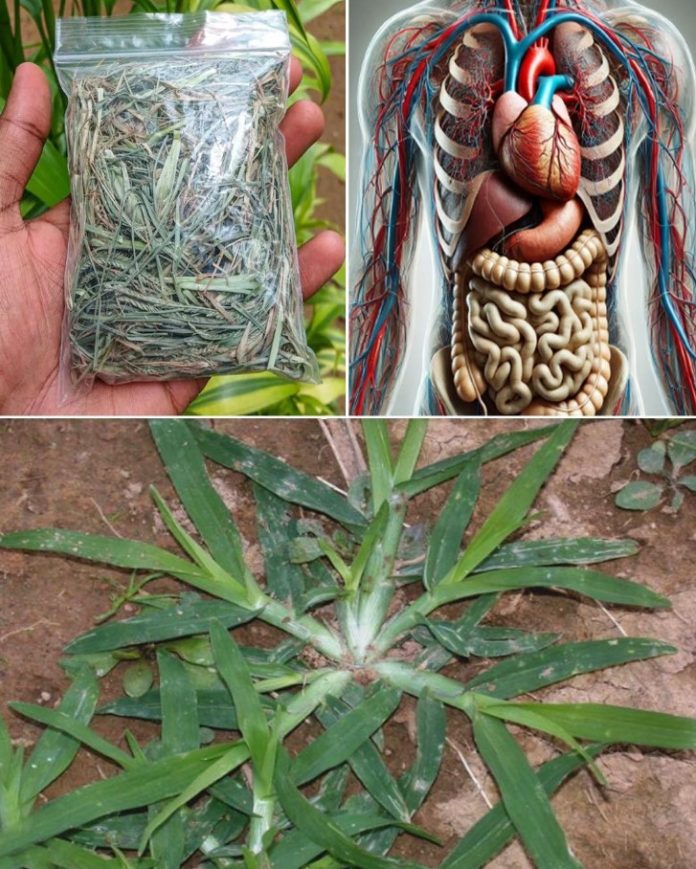Goose grass, also known as Galium aparine, is more than just a common weed in your backyard. This unassuming plant has been used for centuries to treat a variety of ailments, making it a hidden gem in natural medicine.
With its detoxifying and anti-inflammatory properties, goose grass offers relief for skin conditions, digestive issues, and more. In this article, we’ll dive into the incredible healing powers of this plant and explore how you can incorporate it into your wellness routine.
What Is Goose Grass?
Goose grass (Galium aparine), also referred to as cleavers, stickyweed, or bedstraw, is a plant that tends to cling to almost anything it touches, hence its common nickname. While it might seem like an annoying weed, goose grass is a powerful herb known for its medicinal properties. It has been used for generations in traditional medicine for its numerous health benefits, particularly for detoxification and skin healing.
Traditional Uses and Medicinal Properties
In the world of herbal medicine, goose grass is celebrated for its wide range of healing properties. Historically, it has been used to treat more than ten ailments, many of which modern research is starting to support. Here are some of the most notable ways goose grass has been used:
1. Detoxification and Kidney Health
One of the most famous benefits of goose grass is its ability to support kidney function and act as a natural diuretic. It helps cleanse the kidneys and promote healthy urinary function, flushing out toxins from the body. For those dealing with issues like water retention or mild kidney problems, goose grass tea or tinctures can provide relief by improving fluid balance and reducing swelling.
2. Lymphatic System Support
Goose grass is known to boost the health of the lymphatic system, which is crucial for immune function and detoxification. By improving lymphatic drainage, it helps eliminate waste from the body and supports immune system health. This makes goose grass an excellent remedy for swollen lymph nodes, minor infections, and even skin conditions.
3. Skin Healing
As a topical remedy, goose grass can be applied directly to the skin to soothe conditions like eczema, psoriasis, and rashes. It has anti-inflammatory and cooling properties that make it ideal for calming irritated or inflamed skin. In fact, it’s been used as a natural remedy for minor burns and insect bites. Simply crush the plant to extract its juices and apply them to the affected area for instant relief.
4. Digestive Health
When consumed as a tea, goose grass can improve digestive health. Its mild laxative effect helps relieve constipation and supports overall digestive function. It also has a calming effect on the digestive tract, which can alleviate discomfort caused by indigestion or bloating.
How to Use Goose Grass for Health Benefits
There are several ways you can incorporate goose grass into your wellness routine, depending on what you’re treating. Here are a few common methods:
1. Goose Grass Tea
One of the simplest ways to enjoy the benefits of goose grass is by brewing it into a tea. To make goose grass tea, follow these steps:
- Gather fresh goose grass (or dried, if available).
- Wash the plant thoroughly and chop it into small pieces.
- Boil water and steep the goose grass for 10-15 minutes.
- Strain and enjoy. Drinking one or two cups a day can help with detoxification and support kidney and digestive health.
2. Tinctures
Goose grass can also be made into a tincture, which is a concentrated herbal extract. Tinctures are typically stronger than teas and can be taken by adding a few drops to water or directly under the tongue. This method is ideal for supporting the lymphatic system and addressing more severe ailments like swollen lymph nodes or chronic inflammation.
3. Topical Applications
To use goose grass for skin issues, you can make a poultice or extract its juices by crushing the fresh plant. Apply the juice or poultice directly to the affected area to help with burns, rashes, or other skin irritations. Some people also add the crushed plant to baths for an overall soothing effect.
The Science Behind Goose Grass
While many of goose grass’s uses are rooted in traditional medicine, modern research has begun to back up some of these claims. Studies have shown that goose grass contains compounds like flavonoids and iridoid glycosides, which have anti-inflammatory, antimicrobial, and antioxidant properties. These compounds help explain why the plant is so effective at treating skin conditions, infections, and inflammation.
Precautions and Considerations
Although goose grass is generally considered safe when used appropriately, there are a few things to keep in mind before using it. People with certain kidney conditions should consult a healthcare provider before using goose grass, as it can have diuretic effects. Additionally, pregnant or breastfeeding women should avoid using the herb without professional guidance.
It’s also important to properly identify goose grass before harvesting it. While it’s common in many parts of the world, it can sometimes be confused with similar plants. If you’re unsure, consult an experienced forager or herbalist to help you identify the plant correctly.
Conclusion:
Goose grass may look like an ordinary weed, but its powerful medicinal properties make it a backyard miracle. From detoxifying the body and supporting the lymphatic system to healing skin ailments and improving digestive health, this plant is a versatile and effective natural remedy.
Whether you’re sipping it as tea or applying it to your skin, goose grass offers a host of health benefits that are well worth exploring. So the next time you see this “weed” in your yard, consider its healing potential before pulling it out!
Source of the picture : Barbara O’Neill Lectures










